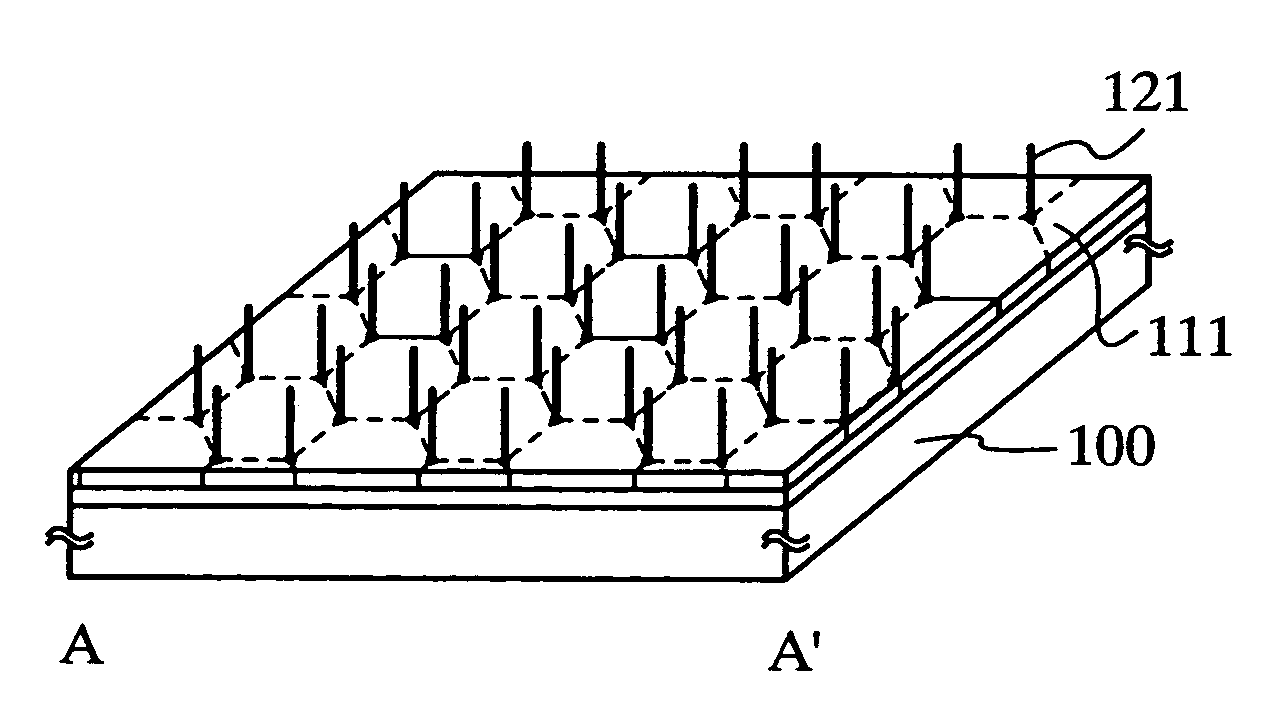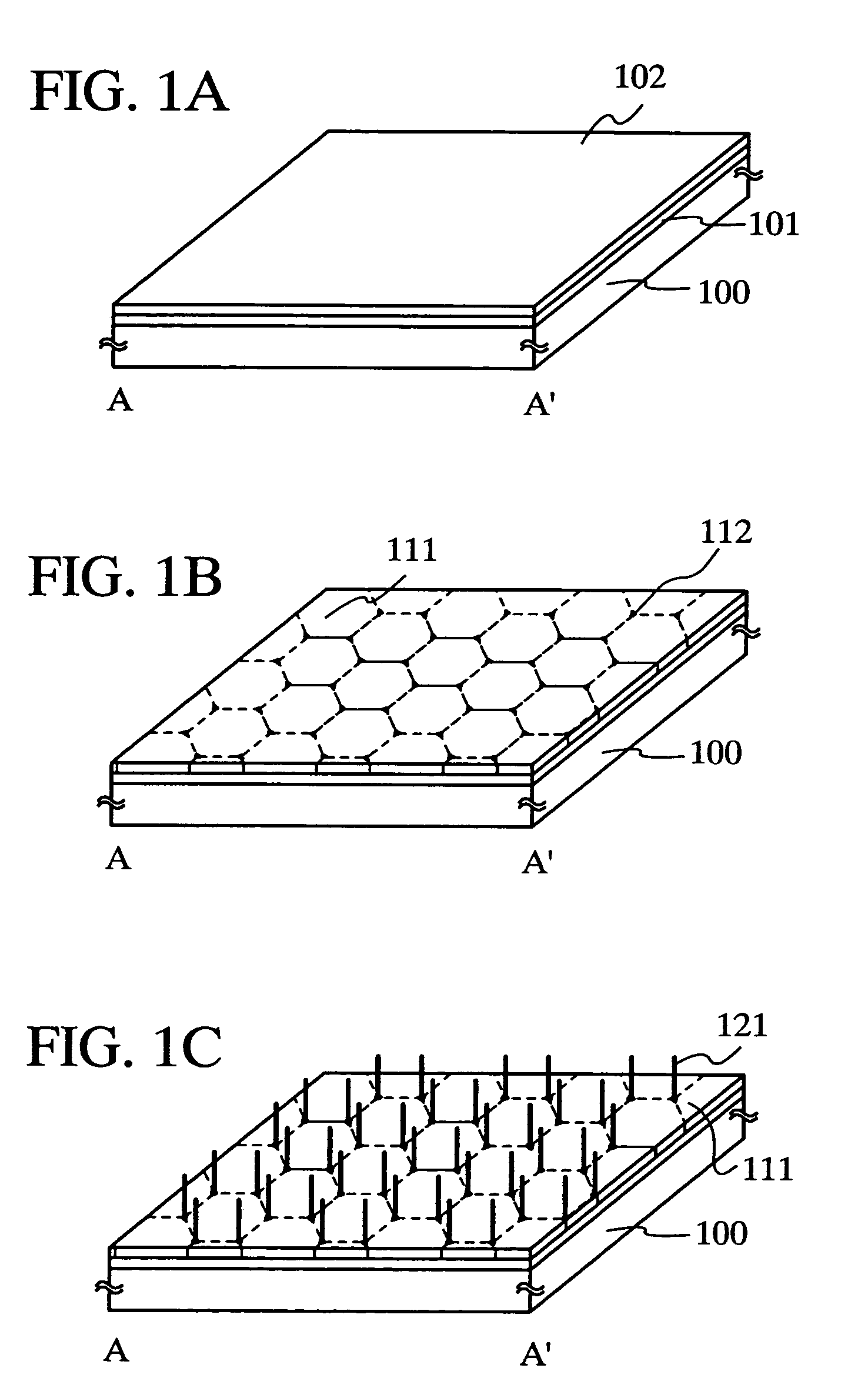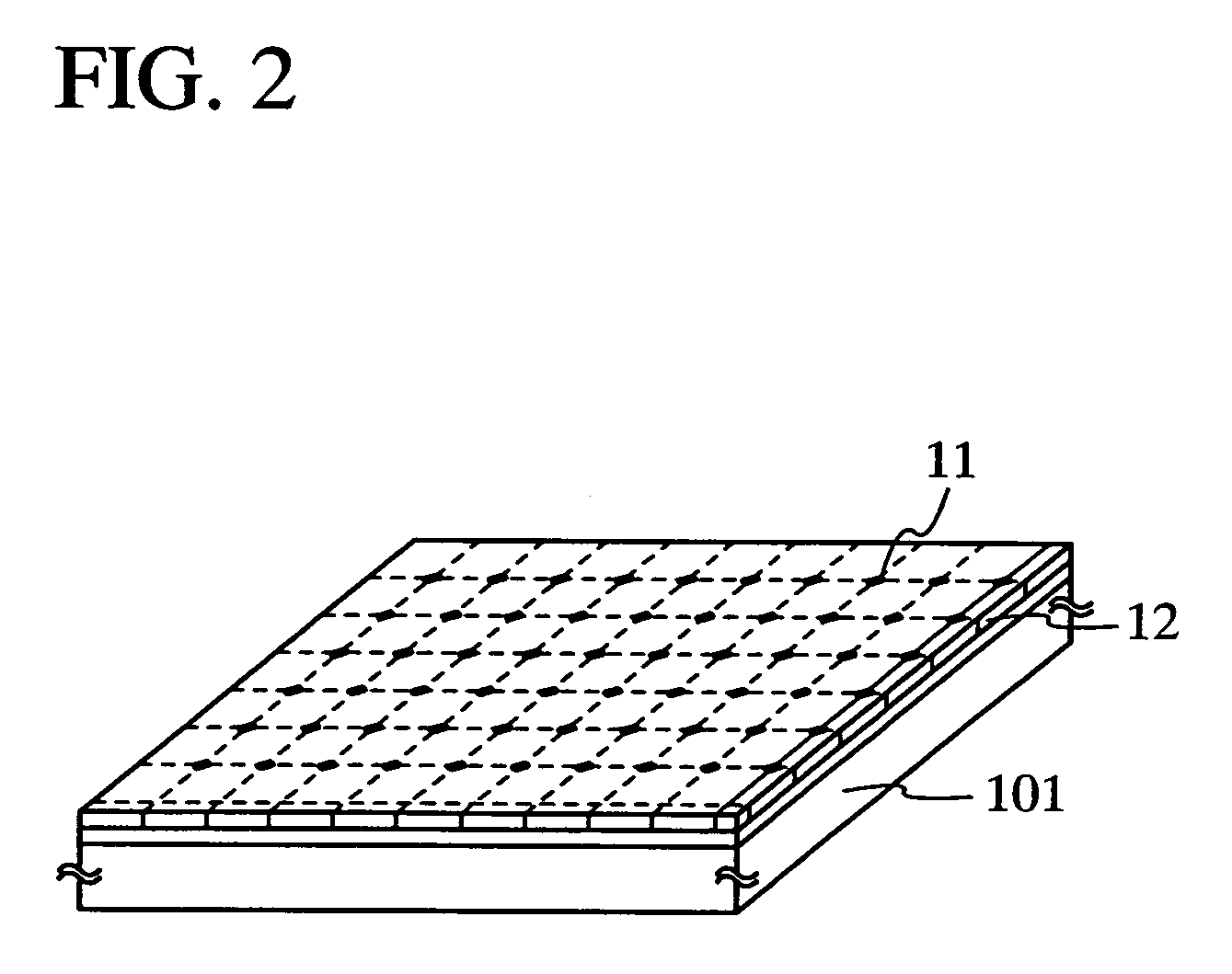Method for manufacturing ultrafine carbon fiber and field emission element
a manufacturing method and technology for carbon fiber, applied in the manufacture of electrode systems, electric discharge tubes/lamps, nanoinformatics, etc., can solve the problems of large variation in diameter, difficult to control the diameter of cnt, and difficult to separate the diameter and length of ultrafine carbon fiber in the conventional manufacturing method, etc., to achieve high reliability and high productivity
- Summary
- Abstract
- Description
- Claims
- Application Information
AI Technical Summary
Benefits of technology
Problems solved by technology
Method used
Image
Examples
embodiment 1
(Embodiment 1)
[0042]A method for manufacturing an ultrafine carbon fiber is described with reference to FIGS. 1A to 1C and 3A to 3C. FIGS. 1A to 1C are perspective views of substrate over which an amorphous semiconductor film and a crystalline semiconductor film are formed. FIGS. 3A to 3C are cross-sectional views taken along lines A–A′ in FIGS. 1A to 1C.
[0043]As shown in FIGS. 1A and 3A, an amorphous semiconductor film 102 is formed over a substrate 100 by interposing a first insulating film 101 therebetween.
[0044]The first insulating film 101 is formed of a film mainly containing silicon and oxygen (a silicon oxide film, a silicon nitride oxide film, a silicon oxynitride film, and the like) by a known method (CVD (Chemical Vapor Deposition), PVD (Physical Vapor Deposition), or the like). The first insulating film 101 can prevent a trace of alkali metal such as sodium (Na) contained in a glass substrate from dispersing.
[0045]The amorphous semiconductor film 102 is formed on the fir...
embodiment 2
(Embodiment 2)
[0051]Next, a method for manufacturing an ultrafine carbon fiber of the present invention, which is different from the above, is described with reference to FIGS. 1A to 1C and 4A to 4D.
[0052]As well as FIGS. 3A to 3C, FIGS. 4A to 4D are cross-sectional views taken along lines A–A′ in FIGS. 1A to 1C. As well as Embodiment 1, a first insulating film 101 and an amorphous semiconductor film 102 are sequentially formed over a substrate 100. Then, this amorphous semiconductor film 102 is crystallized. In this embodiment, laser crystallization is used for a crystallization method. The amorphous semiconductor film 102 is irradiated with laser light 104 using a gas laser oscillator, a solid laser oscillator, or a metal oscillator to form a crystalline semiconductor film 131. Continuous-wave or pulsed laser light can be used for the laser light 104 at this time.
[0053]As shown in FIG. 4B, a thin film 132 having a metal element is formed on the crystalline semiconductor film 131 b...
embodiment 3
(Embodiment 3)
[0058]Next, a method for manufacturing an ultrafine carbon fiber of the present invention, which is different from the above, is described.
[0059]As well as FIGS. 3A to 3C and 4A to 4D, FIGS. 5A to 5C are cross-sectional views taken along lines A–A′ in FIGS. 1A to 1C. As well as Embodiment 1, a first insulating film 101 and an amorphous semiconductor film 102 are sequentially formed over a substrate 100.
[0060]Next, as shown in FIG. 5A, a solution 103 containing from 1 ppm to 1000 ppm of a metal element is applied on the surface of the amorphous semiconductor film 102. Nickel (Ni), iron (Fe), cobalt (Co), platinum (Pt), titanium (Ti), palladium (Pd), or the like can be applied to the metal element.
[0061]Then, the amorphous semiconductor film 102 is crystallized. Here, laser crystallization is used for a crystallization method. The amorphous semiconductor film 102 is irradiated with laser light 104 using a gas laser oscillator, a solid laser oscillator, or a metal oscilla...
PUM
| Property | Measurement | Unit |
|---|---|---|
| length | aaaaa | aaaaa |
| length | aaaaa | aaaaa |
| length | aaaaa | aaaaa |
Abstract
Description
Claims
Application Information
 Login to View More
Login to View More - R&D
- Intellectual Property
- Life Sciences
- Materials
- Tech Scout
- Unparalleled Data Quality
- Higher Quality Content
- 60% Fewer Hallucinations
Browse by: Latest US Patents, China's latest patents, Technical Efficacy Thesaurus, Application Domain, Technology Topic, Popular Technical Reports.
© 2025 PatSnap. All rights reserved.Legal|Privacy policy|Modern Slavery Act Transparency Statement|Sitemap|About US| Contact US: help@patsnap.com



